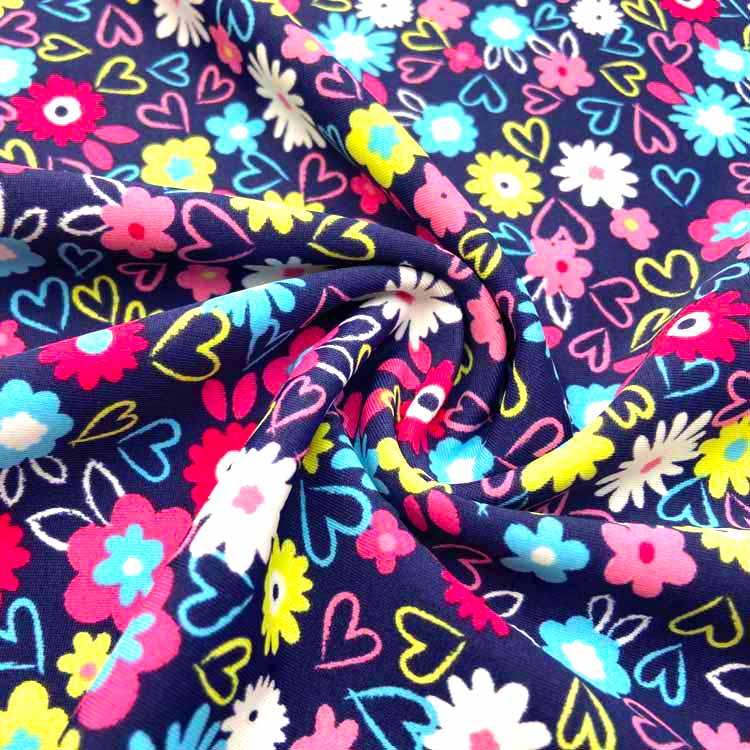How do
beachwear polyester fabrics show off chlorine resistance, and why is this selection critical for swimwear in both pool and beach environments?
Chlorine resistance is a key characteristic of beachwear polyester fabric, playing a essential function within the durability and performance of swimming gear. The potential of those fabric to withstand the cruel outcomes of chlorine is critical for folks who common both pool and beach environments. Let's delve into the motives at the back of this feature and its importance in the swimwear enterprise.
Polyester's Inherent Chemical Structure:
The chlorine resistance of beachwear polyester fabrics may be attributed to the inherent chemical structure of polyester fibers. Polyester is a artificial polymer composed of long-chain polymers, and its molecular structure affords a natural barrier in opposition to the corrosive effects of chlorine. Chlorine, typically used in swimming pools for disinfection, can degrade and weaken certain substances over time. However, polyester's resistance to chemical degradation makes it a resilient preference for swimming wear.
Engineering for Chlorine Resistance:
In addition to its natural resistance, manufacturers frequently engineer beachwear polyester fabrics to enhance their chlorine resistance further. This might also contain incorporating special finishes or treatments all through the fabric manufacturing method. These remedies create an additional layer of protection, stopping chlorine molecules from penetrating the cloth and causing damage. As a end result, the swimming gear stays durable and keeps its integrity inspite of frequent publicity to chlorinated water.
Prolonged Color Retention:
Chlorine resistance is intently tied to shade retention in beachwear polyester fabric. Chlorine may have a bleaching effect on fabric, causing hues to vanish over time. The resistance of polyester to chlorine allows preserve the vibrant colors of swimming gear, making sure that the colors continue to be bright and appealing after severa swims in both swimming pools and open water.
Extended Lifespan of Swimwear:
The chlorine resistance of beachwear polyester fabric directly contributes to the prolonged lifespan of swimwear. Regular publicity to chlorine can accelerate wear and tear, main to fabric deterioration and lack of elasticity in swimming wear crafted from much less resistant substances. Polyester's ability to face up to chlorine ensures that the cloth continues its structural integrity, elasticity, and general exceptional over an prolonged duration. This toughness is a huge aspect for clients seeking out durable and value-powerful swimming wear alternatives.
Versatility for Pool and Beach Environments:
The importance of chlorine resistance goes beyond simply pool use. Many beachgoers experience the benefit of swimming gear that could seamlessly transition between pool and ocean environments. Whether swimming laps in a chlorinated pool or frolicking within the salty waves of the sea, beachwear polyester fabric provide a flexible answer. This adaptability makes them a famous choice for people who need swimwear able to withstanding numerous aquatic situations without compromising on overall performance or aesthetics.
In end, the chlorine resistance of beachwear polyester fabric is a crucial attribute that ensures the durability, shade retention, and prolonged lifespan of swimwear. This feature now not simplest caters to the desires of avid swimmers in chlorinated swimming pools however also gives a flexible solution for folks who are seeking for durable and resilient swimming gear for seaside outings. As the swimming gear industry maintains to adapt, the emphasis on chlorine resistance remains a key attention for both producers and clients alike.
 COLORFUL BLOOM PRINTED SPANDEX FABRIC YT024
COLORFUL BLOOM PRINTED SPANDEX FABRIC YT024
